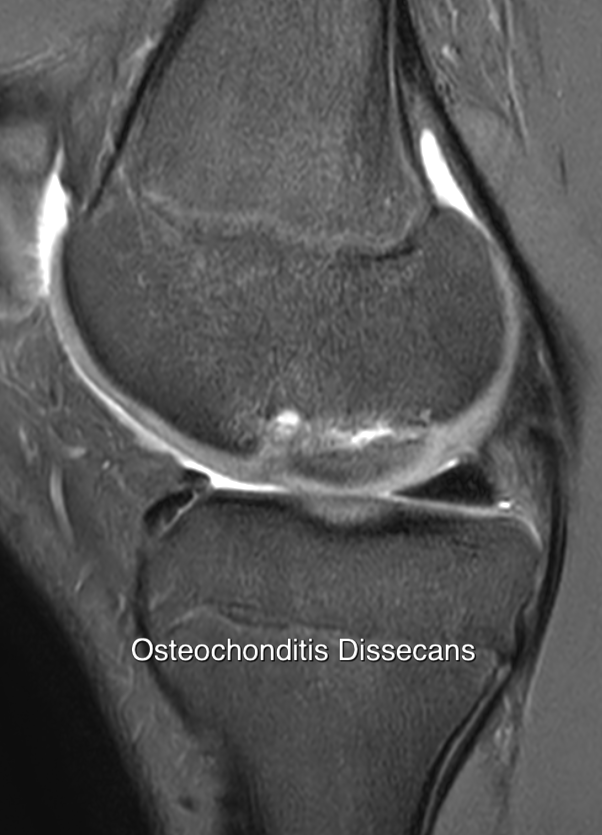Other than impaction injuries, the majority are due to shearing forces at the chondral surface.
They are most commonly encountered in the knee and the ankle but can occur in any joint.
These injuries may be entirely chondral or may also involve a fragment of the subchondral bone
Osteochondral injuries occur in particular at a number of susceptible sites, usually on the convex articular surface of a joint.
In the knee, patella dislocation which causes shearing on the medial retropatellar facet and the lateral femoral condyle.
Whilst trauma remains an important etiological factor, contributing factors include a predisposition, possibly related to vascular supply.
Osteochondritis desiccans is the term used to encompass lesions with mix of trauma and vascular predisposition
Typical locations include the medial femoral condyle, the talar dome particularly medially, and the capitellum .
These injuries need to be differentiated from subchondral insufficiency fractures (SCIF) which occur in the older population
SCIF is more common in the lower limb and especially in the medial femoral condyle and the hip.
Osteochondritis dissecans, osteochondral injuries and subchondral insufficiency fractures also have to be differentiated from AVN.
This is particularly a problem in the hip and knee which are also relatively common areas for avascular necrosis to occur.
Many cases of femoral head AVN are misdiagnosed SCIF’s
Spontaneous osteonecrosis of the knee (SONK) does not exist
The imaging goals in patients with chondral or osteochondral injuries are both detection and assessment of stability.
MRI is generally excellent at detecting these lesions
Classification can be more problematic.
Signs of OCD instability
• Not straightforward
• Open epiphysis has better prognosis
• Cartilage damage - though breach into notch not so important
• fluid filled cleft/cysts also at the deep cartilage bone or bone bone interface

